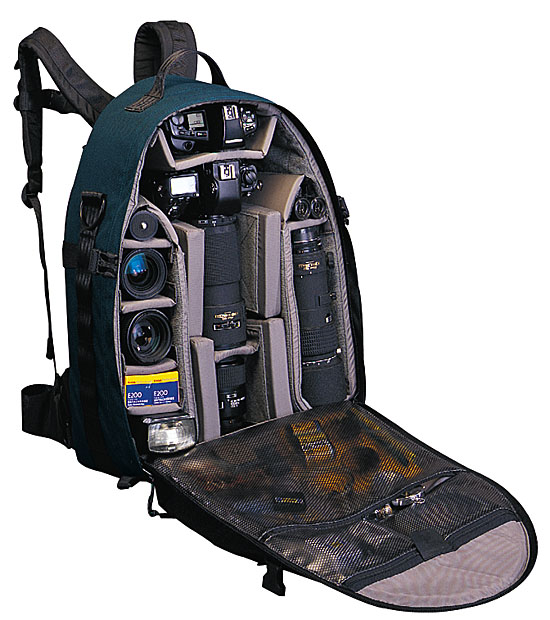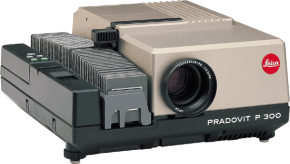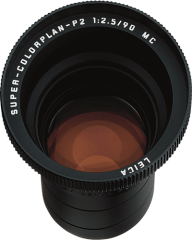In the end, I decided to get a new P600 from NY camera in Germany. Nobody else on the North American continent carried it, and the price of the projector and lens from NY camera was only around $425, which seemed like a great way to have a Leica on the photo shelf. I also ordered a Lowepro classic trekker backpack with the projector, as it was only $110 there as opposed to $160 in the US. I ordered everything in November 2000. While the chap at NY camera (Graham MacLean) was always courteous and helpful, they could not get the P600 till march, at which point they declared that the price was actually 200 DM higher than originally stated. I then decided to go for the P300 IR instead and asked whether it came in 110 V. Another month or two passed before they could find this out accurately, and the answer was NO. Finally, in May, I gave in and decided to get the 220V version and get a transformer here.

LowePro Classic Trekker backpack. Mine holds the 35mm system minus flash and 300/4 L, and the 4x5 system.
They shipped it in June, and the package arrived at my doorstep in July. I was about to take it in when the postman tells me that I owe $112 in duty for a package worth about $512 including shipping. The customs had charged 20% straight. I decided to let the postoffice hold the package while I protested the duty amount. The post office warned me that customs was very unresponsive and it might take a long time for the protest to be resolved. However, it got resolved in two weeks, but it took another two weeks for them to actually fax the revised amount to the post office. Finally, in early August 2001, I got the package home. I ended up paying $40 in duty instead of $112.
I had to spend another $50 to get a 500W transformer to run the beast. I got the transformer locally at Fryís and it works quite well.
The projector works well. It's the sharpest and brightest one I have used and am very happy with it. All of my audiences, on first viewing, have oohed and aahed at the sharpness, brilliance, contrast, and color quality of the images. Of-course, these people are not experts in slide projector quality and no nothing of it, except that I never got this reaction from my old projector!
My only complaint is that it is pretty noisy, especially since some loose piece of plastic or paper seems to be fluttering near the fan inside. Recently, I dismantled the top and found that the loose piece was a reflective tape on the fan side that had come loose. I am not sure why this tape is there on the other side of the lamp to begin with, but I just taped it back securely and the thing is much quieter now.
All in all, I would say that the whole experience was a "trying" one. NY camera was always courteous and polite, but took inordinately long to find out things like availability or voltage properties. Also, they never adequately explained the difference between CS slide trays and regular ones, and only now do I realize that you need special CS mounts to use the 3 sets of (now useless) CS trays I got. I was too impatient to properly resolve this when placing the order since I was so fed-up of waiting, but it is still my fault for not finding out exactly what it was. The customs people were pleasantly friendly and courteous, not arrogant and rude as I had expected a tax-collecting government bureaucracy to be. Certainly, waiting nine months for a slide projector required a lot of patience.
The price savings was quite good. B&H sells the 90/2.5 colorplan for $140; I got it for $80. The backpack also only cost about $110 compared to $160 I have seen it selling for here.
In retrospect, I could have had my projector a month sooner if I had just accepted the package, paid the $112, and gotten a refund via the protest from customs. For some reason, I thought that by not paying up, I would have a better chance although there is no reason on earth for that. The customs is neither connected with the seller, nor the buyer, nor the transporter/conduit. Why do they care whether I keep the package or not.
P300 IR Features

